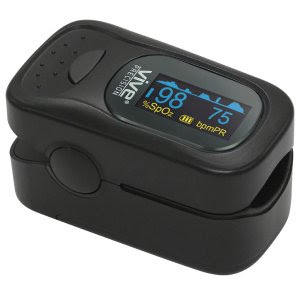Home Oxygen Saturation Monitor: A Review

What is a pulse oximeter?
A pulse oximeter is a device used to indirectly measure blood oxygen saturation. The body regulates oxygen saturation precisely for a specific balance of oxygen in the blood.
What are normal oxygen saturation levels?
Normal pulse oximeter readings for oxygen saturation range between 95 – 100 percent. A saturation level between 90 – 95 percent would be considered low, but does not necessarily indicate a health concern. A blood oxygen saturation level below 90 percent is considered low.
Who should monitor oxygen levels at home?
A pulse oximeter provides safe, non-invasive monitoring of the cardiorespiratory condition for patients who warrant monitoring, such as patients with chronic obstructive pulmonary disease.
Pulse oximetry is also used in high altitudes, such as mountaineering as a red flag for impending altitude sickness and pilots who can experience hypoxia at high altitudes.
Oxygen saturation can be comprised in children with asthma or wheezing and may warrant home monitoring. Pulse oximetry has also been used to determine appropriate treatment methods for individuals with venus leg ulcers and diabetics with vascular disease progression.
Discuss with your doctor to determine if monitoring home oxygen levels would be beneficial for your situation.



